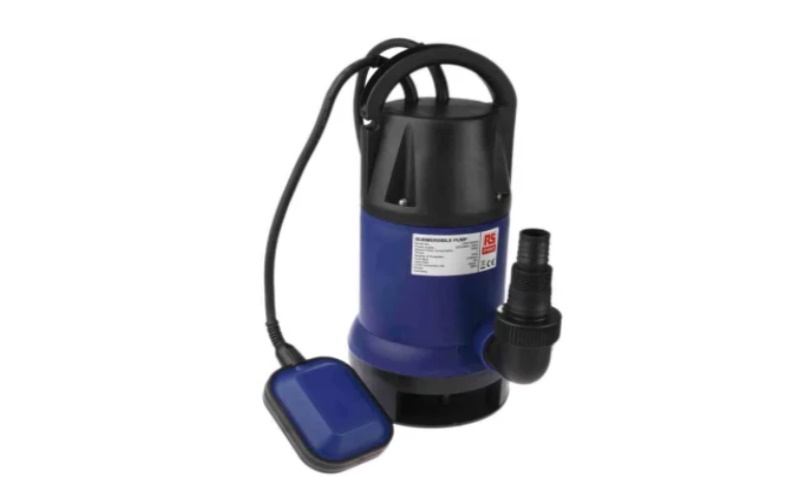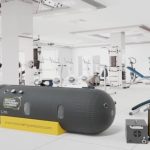Submersible pumps are specialized devices that operate underwater specifically designed to push fluids to the surface. They are often used in various applications including oil wells, drainage systems, or septic tanks due to their efficiency and reliability.
Submersible pumps operate by pushing, rather than pulling, water to the surface. The Submersible pump Malaysia mechanism includes a sealed motor coupled with the pump body, submerged deep in the well, and turning impellers to push the water upwards.
Submersible pumps, designed to function underwater, come in various types, such as open-well, bore-well, and pond pumps. These types differ in capacity, discharge range, and head range, catering to different water pumping needs in domestic or industrial settings.
Components of Submersible Pumps
A motor is a machine that converts energy into motion or mechanical force. This energy can be sourced from numerous means such as electricity, petrol, or diesel. Motors have a wide range of uses in vehicles, appliances, and industrial machinery.
Impellers are rotating devices that are part of the mechanism inside pumps. They play a crucial role in moving fluid or gas by exerting pressure. Their efficient operation is vital for the optimal performance of pumps in various industries.
A casing is a protective layer or cover designed to house different objects, such as wires and machinery parts. It provides both structural support and safeguards the enclosed item from external damage, maintaining its efficiency and performance.
Cables are vital components in the technology and communication sectors, used to transfer information and electricity. They come in various types including, power, optical, and HDMI cables, each serving a different function. These connectors provide efficiency and reliability in countless devices.
Operation of Submersible Pumps
The installation process typically involves setting up new software or hardware on a computer or system. This process includes downloading and running the installation file and following the step-by-step setup instructions to complete the installation.
The start-up procedure refers to the necessary steps entrepreneurs take to launch a new business. It includes market research, business plan development, securing funding, legal structure determination, and acquiring necessary licenses and permits.
Proper maintenance and repair considerations ensure the longevity and performance of equipment or infrastructure. They involve routine checks, servicing, system upgrades, replacement of worn-out parts, and troubleshooting. Neglecting these tasks often leads to reduced productivity and costly failures.
Benefits of Submersible Pumps
High efficiency reflects maximum productivity with minimum wasted effort or expense. It’s essential in various fields, from machinery, and technology, to human performance. Achieving high efficiency translates to lesser energy consumption, time-saving, and improved performance.
Self-priming capabilities refer to a pump’s ability to automatically rid the system of air, enabling it to function without manual intervention. This feature improves efficiency, reduces maintenance efforts, and significantly prolongs the pump’s lifespan.
Reduced pump cavitation refers to the minimization of the formation of vapour cavities in liquids flowing through pumps. This scenario improves pump efficiency, and longevity, and prevents potential damage caused by the violent collapse of these cavities.
Quiet operation refers to machines or devices functioning with minimal noise output. This feature is a major selling point for many products such as air conditioners, dishwashers, and generators, allowing for unintrusive use in both home and office environments.
Versatility reflects an individual’s ability to adapt to various situations. It embodies flexibility and adaptability, permitting effective functioning in different environments. Being versatile can help in personal growth and in exploring diverse opportunities in life.
Common Uses of Submersible Pumps
In oil industries, vast operations focus on extraction, refinement, and distribution of oil products. These industries significantly contribute to the global economy. However, they also raise environmental concerns due to pollution and contribute to climate change.
In water treatment plants, raw water is converted into potable water safe for human consumption. These facilities use multiple steps – coagulation, sedimentation, filtration, and disinfection – to eliminate harmful bacteria, viruses, and pollutants present in water.
In agriculture, irrigation plays a crucial role in promoting optimal plant growth. It ensures a steady supply of water, enabling consistent agricultural production, regardless of seasonal changes, and can be crucial in areas with irregular rainfall.
In sewage systems, waste is collected from residential, commercial, and industrial sources, and then transported through a network of pipes and pumps to a treatment plant. Significantly, these systems safeguard public health and the environment by treating wastewater.
Draining basements or flood water are crucial household tasks to maintain the integrity of the home structure. These procedures involve the usage of pumps, hoses, or buckets to remove the excess water, preventing potential damage and mould growth.
Factors to Consider When Choosing Submersible Pumps
Material and durability are two vital elements in product manufacturing. The type of material used greatly impacts the product’s longevity. Hence, durable materials are sought out to ensure a product can withstand wear and tear over time.
The type of fluid to be pumped can vary widely, from water and oil to chemicals or sewage. The specific fluid type directly impacts the choice of pump, as different substances require different materials and mechanisms for safe and effective pumping.
Power requirements refer to the amount of electrical energy necessary for a device or system to function properly. This includes considerations of voltage, current, and frequency. Meeting these requirements is vital for safe and efficient operation.
Pump performance refers to the efficiency and capacity of a pump to move fluid at a certain rate. It encompasses factors such as flow rate, pressure generation, and energy consumption. Proper pump performance is crucial in various industrial operations.
Safety Tips When Handling Submersible Pumps
Proper installation is crucial for any device or system to function optimally. It involves following specific guidelines, safety protocols, and user instructions. A flawed installation can lead to system malfunctions, decreased efficiency, or potential safety risks.
Regular inspections are critical to maintaining safety and efficiency in various settings, from industrial plants to residential homes. These assessments monitor equipment conditions, identify potential failures, and ensure compliance with safety regulations.
The use of protective gear is crucial in various professions and activities to prevent injuries. It includes equipment like helmets, gloves, goggles, and safety shoes, which shield the body from potential harm or hazardous conditions.
Environmental Impact of Submersible Pumps
Energy consumption is the total amount of energy utilized by an individual, system or region. It is a key contributor to climate change, as most energy sources produce greenhouse gases. Therefore, promoting energy efficiency and renewable energy use is essential to lessen environmental harm.
Pollution considerations are crucial to maintaining a sustainable environment. They involve minimizing waste production, efficiently using resources, and enacting strategies to reduce, reuse, and recycle. Regulations are necessary to enforce sustainable practices and may influence environmental policy.

Conclusion
The comprehensive guide on submersible pumps sheds light on the intricacies and benefits of these specialized devices, turning complexity into simplicity. Submersible pumps, designed to operate underwater, find applications in various settings such as oil wells, drainage systems, and water treatment plants due to their efficiency and reliability.
Understanding the basic mechanism of submersible pumps, the guide explains how they operate by pushing water to the surface, distinguishing them from traditional pumps. The different types of submersible pumps, including open-well, bore-well, and pond pumps, cater to diverse water pumping needs in domestic and industrial scenarios.
The guide delves into the components of submersible pumps, emphasizing the significance of the motor, impellers, casing, and cables in ensuring optimal performance. It explains the installation process, start-up procedures, and the importance of maintenance and repair considerations to prolong the lifespan of these devices.





